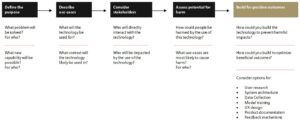In every organization, there’s an undercurrent of innovation powered by those who not only understand its essence but also possess the capability to guide others towards it.
Enter the ‘Innovation Mentor’. Let’s embark on a deep dive into this pivotal role, drawing insights from real-world instances and strategies to identify and nurture them.
The Anatomy of an Innovation Mentor
An Innovation Mentor is a beacon of knowledge and experience, uniquely poised to guide, inspire, and stimulate innovative thought processes.
Traits and Characteristics:
- Strong Communication: The prowess to articulate ideas and catalyze action.
- Empathy: A profound connection with the aspirations of their mentees.
- Vision: The foresight to align innovation with overarching organizational goals.
- Adaptability: An unwavering openness to disruptive ideas.
Identifying and Discovering Innovation Mentors
Finding the right mentors within an organization can be akin to unearthing hidden gems. Here’s how to spot them:
- Peer Recognition: Often, the best mentors are recognized and revered by their peers for their guidance and expertise.
- Historical Innovation: Track records of championing innovative projects can be a clear indicator.
- Leadership Qualities: Effective mentors often display leadership qualities, even if they’re not in leadership roles. Look for those who naturally gather a following.
- Continuous Learning: Those who are constantly upskilling, attending workshops, or championing training often have the mindset of a mentor.
Real-World Insights into the Impact of Innovation Mentors
- Google’s “20% Time” Program: Under informal mentorship, engineers were emboldened to dedicate 20% of their time to passion projects, birthing products like Gmail and Google Maps.
- Procter & Gamble’s Connect + Develop Program: With internal champions mentoring external contributors, the organization witnessed the inception of products like the Swiffer Duster.
- Intuit’s Innovation Catalysts: Trained ‘Innovation Catalysts’ championed a culture of innovation, guiding teams to prototype and innovate with agility.
- IBM’s Corporate Service Corps (CSC): Senior mentors in CSC paved the way for future leaders, mentoring them to navigate real-world challenges with dexterity.
- Philips’ HealthWorks Program: Paired with internal mentors, startups in the program metamorphosed their healthcare solutions to global acclaim.
Incentivizing the Mentors
To maintain the momentum of mentor-led innovation, recognizing and rewarding these luminaries becomes pivotal:
- Career Progression: Carve pathways for mentors, letting them ascend to leadership echelons.
- Recognition: Celebrate their triumphs and the ripples they create in the innovation pond.
- Professional Development: Facilitate their perpetual learning journey.
- Financial Incentives: Tangible acknowledgments amplify their contributions and drive.
Conclusion
Innovation Mentors are the architects of transformative ideas. Their influence, validated by leading corporations, underscores their indispensability. By identifying, nurturing, and incentivizing these mentors, organizations are not just championing innovation; they are sculpting a legacy of evolution, inclusivity, and profound impact.





